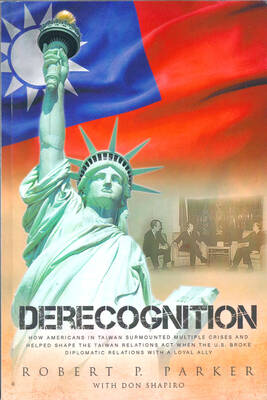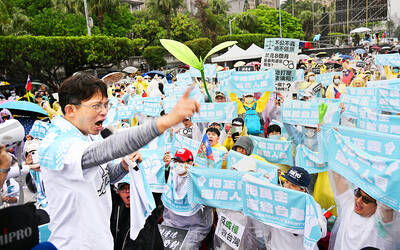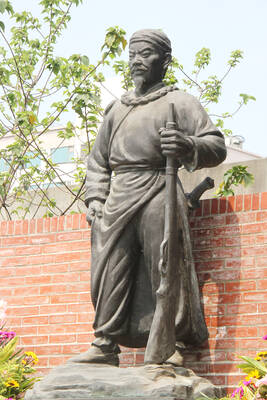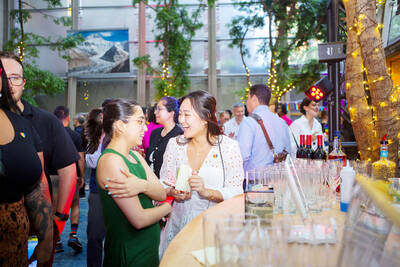For an island nation where oyster omelets (蚵仔煎) were once voted the exemplar of Taiwanese xiao chi (小吃), or snacks, Taipei suffers from a curious — and tragic — dearth of raw oyster bars. Yaya’s Oyster Bar (Yaya’s生蠔酒館) strives to fill that gap. Located on Changan East Road near a strip of seafood joints, the large sculpture of an oyster on a half shell mounted next to the restaurant’s door makes it hard to miss.
In all honesty, if you are the type of oyster aficionado who can tell the difference between the sweet finish of a Kumamoto oyster harvested from the cool waters off the north of Japan or a Long Island blue point, and who caresses each plump, quivering mass with your tongue like a sip of fine pinot noir before sliding it down your throat, then Yaya’s will probably leave you underwhelmed. But if all you are looking for is a plate of reasonably priced bivalves to slurp down with a mug of Coors Light or Corona (NT$150), then you should leave satisfied.
The interior of Yaya’s is cozy and grotto-like, with low ceilings, wooden floors, wall murals and an entertainingly large and detailed poster of cheerful, mostly nude sunbathers on Wreck Beach, a clothing-optional beach near Vancouver. We ordered Set A for two people (NT$1,400), which comes with Boston clam chowder, four raw oysters, four baked oysters, salad, and spaghetti or a rice dish. We also ordered an additional plate of six raw oysters (生蠔拼盤, NT$720 for small oysters, NT$780 for larger ones; sets of three oysters with different toppings are available for NT$360 or NT$390 each).
The oysters are firm, fresh and reasonably flavorful — as far as we could tell. It was difficult to gauge the shellfish’s natural aroma because each one was served with a heavy, overwhelming dollop of topping, including salsa, cocktail sauce, fish roe or miso paste. The latter left a particularly indelible impression and not in a good way — the saltiness of the miso coated my taste buds for the rest of the meal, a situation that no amount of house wine (NT$150 per glass) could rectify. The oyster flesh practically screamed for freedom and we obliged by scrapping off half of each topping (except for the fish roe, which was a suitably light complement) before tipping it into our mouths. The flavors in the baked oysters, which were topped with melted cheese, were better balanced.
The clams in the chowder were generously apportioned and tender, but we wished the texture of the soup itself had been a bit thicker and heartier, with more brininess to balance the rich cream base. The al dente texture of the spaghetti was pleasingly toothsome, while the marinara sauce was unexpectedly spicy.
If you want to avoid overeating, order from the restaurant’s a la carte menu. Most of the dishes have an Italian or French twist. Entrees include garlic prawns (義大利蒜蝦, NT$250), escargot (法式田螺, NT$240), plate ribs (鐵板牛小排, NT$350) and meatball pizza (貢丸比薩餅, NT$200). Pasta and rice dishes are available for NT$200 to NT$350, while carb-shy diners can order salads for NT$180 to NT$300.

One of the biggest sore spots in Taiwan’s historical friendship with the US came in 1979 when US president Jimmy Carter broke off formal diplomatic relations with Taiwan’s Republic of China (ROC) government so that the US could establish relations with the People’s Republic of China (PRC). Taiwan’s derecognition came purely at China’s insistence, and the US took the deal. Retired American diplomat John Tkacik, who for almost decade surrounding that schism, from 1974 to 1982, worked in embassies in Taipei and Beijing and at the Taiwan Desk in Washington DC, recently argued in the Taipei Times that “President Carter’s derecognition

This year will go down in the history books. Taiwan faces enormous turmoil and uncertainty in the coming months. Which political parties are in a good position to handle big changes? All of the main parties are beset with challenges. Taking stock, this column examined the Taiwan People’s Party (TPP) (“Huang Kuo-chang’s choking the life out of the TPP,” May 28, page 12), the Democratic Progressive Party (DPP) (“Challenges amid choppy waters for the DPP,” June 14, page 12) and the Chinese Nationalist Party (KMT) (“KMT struggles to seize opportunities as ‘interesting times’ loom,” June 20, page 11). Times like these can

JUNE 30 to JULY 6 After being routed by the Japanese in the bloody battle of Baguashan (八卦山), Hsu Hsiang (徐驤) and a handful of surviving Hakka fighters sped toward Tainan. There, he would meet with Liu Yung-fu (劉永福), leader of the Black Flag Army who had assumed control of the resisting Republic of Formosa after its president and vice-president fled to China. Hsu, who had been fighting non-stop for over two months from Taoyuan to Changhua, was reportedly injured and exhausted. As the story goes, Liu advised that Hsu take shelter in China to recover and regroup, but Hsu steadfastly

You can tell a lot about a generation from the contents of their cool box: nowadays the barbecue ice bucket is likely to be filled with hard seltzers, non-alcoholic beers and fluorescent BuzzBallz — a particular favorite among Gen Z. Two decades ago, it was WKD, Bacardi Breezers and the odd Smirnoff Ice bobbing in a puddle of melted ice. And while nostalgia may have brought back some alcopops, the new wave of ready-to-drink (RTD) options look and taste noticeably different. It is not just the drinks that have changed, but drinking habits too, driven in part by more health-conscious consumers and